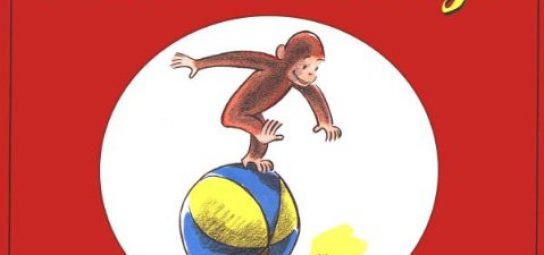The focus of this reading is the text and vocabulary.There will be many opportunities in this reading to connect the information in the illustrations to the information in the text. These connections add meaning to the text. Remember the inferences you made about feelings and possible conversations.
*Read the pages before you ask the questions.
*The author uses a variety of punctuation marks and special type to place special emphasis on certain words and sentences. Making these words sound more important helps to deepen the comprehension of the story.
Page 51:
*Note that each Curious George story begins with the same sentences: “This is George. He was a good little monkey and always very curious.”
~funny: curious, strange, or peculiar. Think of the First Reading. What is the funny noise? Discuss that funny doesn’t mean amusing or humorous here.
Pages 52 – 53:
~Point out that QUACK is in special type. The exclamation mark (!) is, also, used.
These are directions given by the author to make these words sound more important than the other words and sentences.
~The dash (—) tells the reader to make a long pause.
~Who is making all of the QUACKing sounds?
Pages 54 – 57:
Read this series of pages.
~funny: amusing, humorous. Why does George think the ducklings are funny?
~waddle: to walk with short steps, rocking from side to side. Do you think the mother duck waddles? George tries to waddle. Try to waddle. Can you think of other animals who waddle?
~What does this sentence mean: “Ducklings were something new to George.”?
~What had George never seen in the park before?
Pages 58 – 59:
Point out and use the punctuation marks (—, !) and italics to make certain words and sentences sound more important.
~Why does George forget about the ducklings and stop?
~resist: to withstand, stay away from. What is it that George could not resist?
Pages 60 – 65:
As you read these pages, point out:
~the ellipsis on both pages 61 and 63. (. . .). Make a pause to build suspense before you turn the page.
~a long pause for the dash (—).
~On page 61, rumbling: deep, heavy sound, like thunder. What is causing the rumbling sound?
~On page 64, tilt: to lean or slant. Why was the truck bed beginning to tilt?
~On page 65, BIGGER is in special type. Make this word sound more important.
~Why was the fun gone?
Pages 66 – 69:
Read the pages.
~Why are the gardeners standing “with their mouths wide open”?
~How did they know “just what had happened”? What evidence did they see?
~What is the familiar sound that George heard?
Pages 70 – END:
~Why are people “enjoying the park more than ever before”?
~What might the man in the yellow hat and George be doing in the last illustration?
As you enjoy the other stories in the treasury:
~Point out and discuss the importance of the punctuation marks and special type to make the story sound more interesting and provide help to improve understanding.
~Stop at appropriate places to predict what will happen next.
~Pick a couple of interesting vocabulary words to discuss in each story. Vocabulary in Curious George and the Dump Truck: curious, funny (used with two meanings), resist, waddle, rumbling, and tilt
~Look for examples of George being curious.

